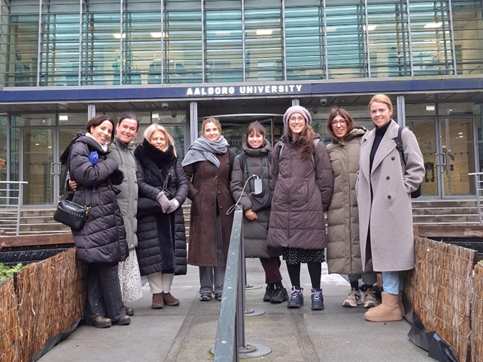By Sónia Nunes Alves
On 3 April, the DASH team visited Évora. During the morning civil servants from the municipalities of Évora and Tubingen gave two presentations on urban history and housing strategies, while during the afternoon the team visited the Bairro do Legado do Operário, an affordable housing project built between the 1930s and the 1940s, which marked the first eastward expansion of the city core.
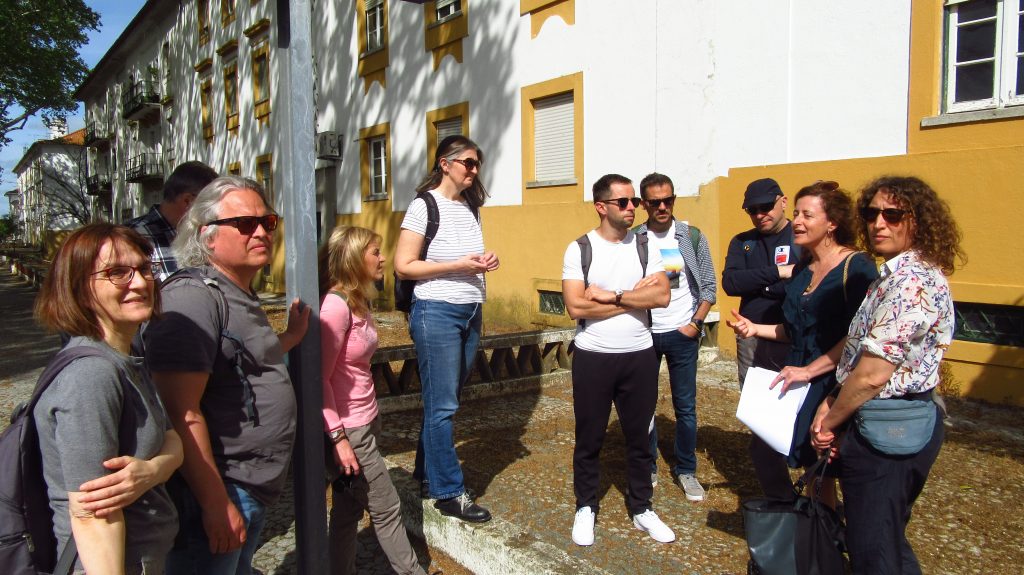
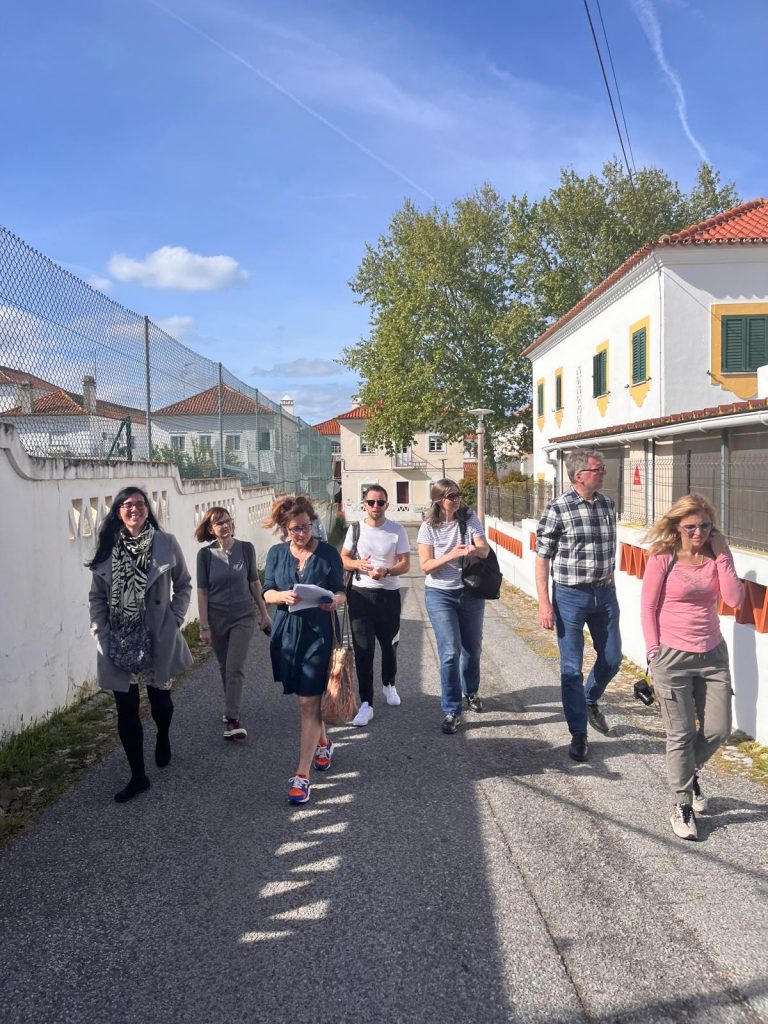
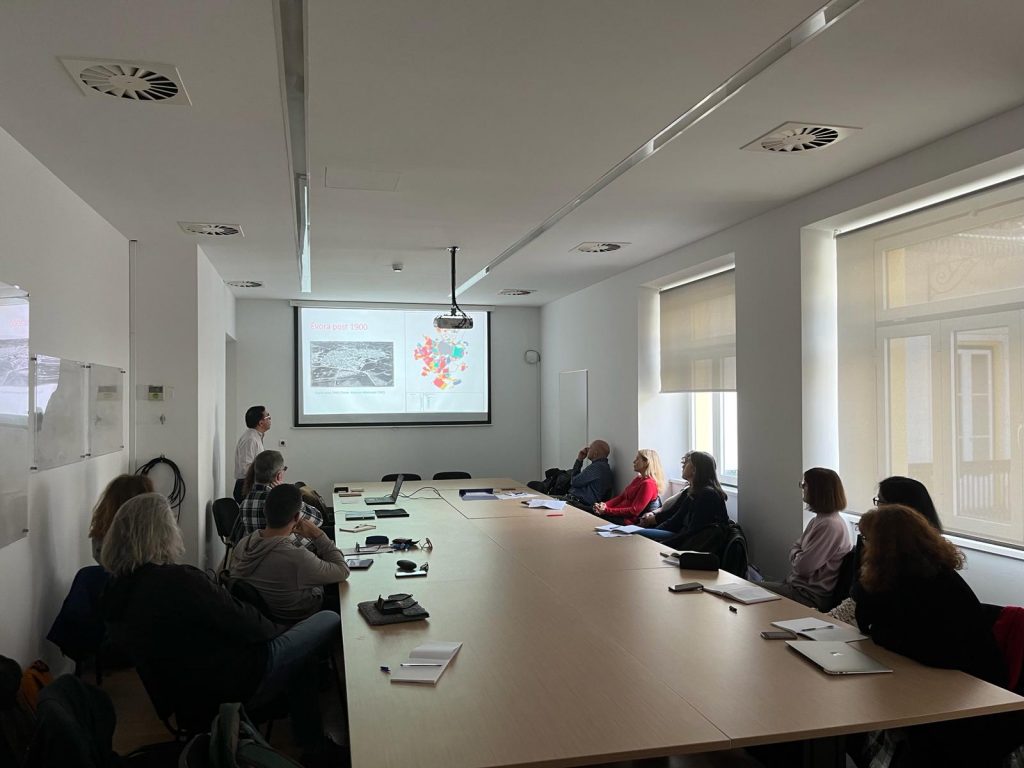
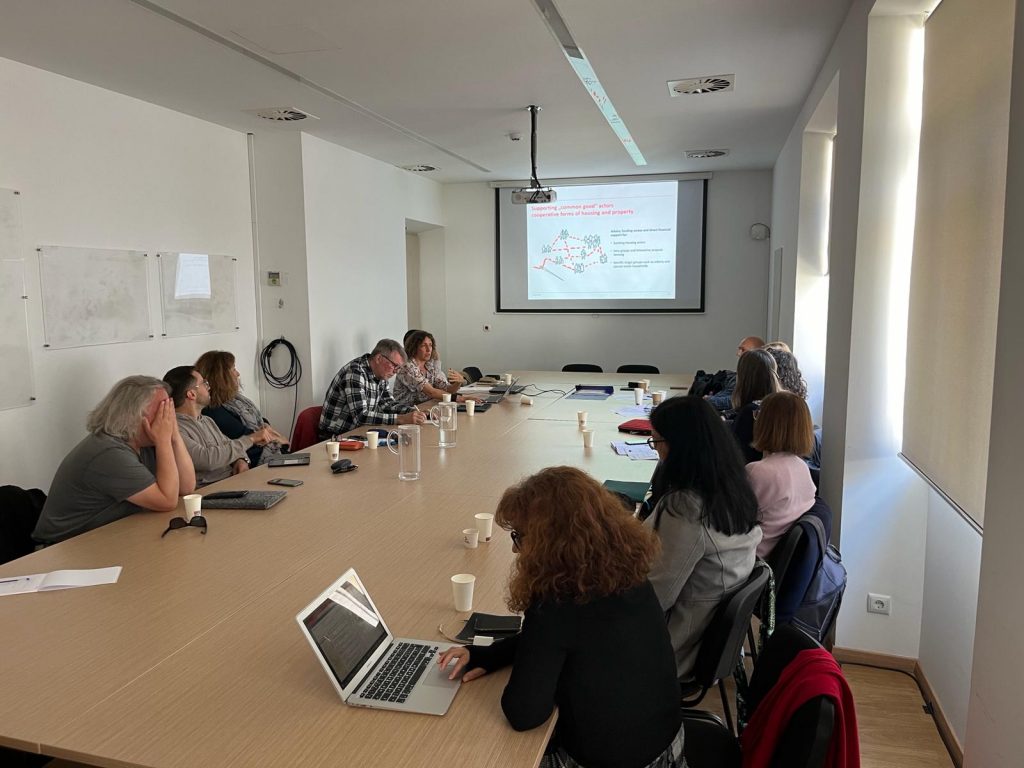
The day started with an introduction and welcome by Eduardo Miranda, senior architect, on behalf of the Urban Planning and Rehabilitation Division of Évora City Council (DORU).
Eduardo’s talk, based on images/cartography, offered us an overview of Évora’s urban development in the 20th century. He explained how Évora – a second-tier city in Portugal, with a key position within the region – expanded due to the influence of several institutional and political conditions. The focus was specifically on how urban planning and housing policy had affected aspects of urban morphology and the quality of the built environment. Please find the PPT here.
Julia Hartmann (Tübingen Municipality) gave a presentation on Tübingen’s urban development strategy and current housing policies. The talk, entitled “Housing strategy and municipal land management in Tübingen”, offered illustrative examples of the city’s innovative approach based on communal living projects and small citizen-led housing cooperatives. Tübingen Municipality considers this approach key to sustainable and inclusive urban development. Please find the PPT here.
During the afternoon the participants were taken on a city tour that included i) a visit to the city’s main listed buildings; and ii) a visit to the Bairro do Legado do Operário, which consists of 86 affordable homes built in two phases (1935-1947 and 1947-1949), and was the first planned neighbourhood that expanded the consolidated historical city eastwards.
The tour was led by Sónia Alves, who explained the complex organisation of public and private capital involved in funding the neighbourhood’s construction – both to acquire land and build infrastructure, and to construct the housing itself. She also emphasised, on the one hand, the important role played by dominant ideologies and the normative expectations of political and legal regimes in shaping possibilities for action at local level; but also, on the other hand, the role of the vision and agency of urbanists like Étienne de Groer (1882-1974), who worked on the urbanisation plan for the area, as well as public and not-for-profit actors.
Sónia explained the context in which this neighbourhood was constructed: Salazar’s regime had proclaimed that ownership was the ideal tenure for achieving social stability, and the “Programa Casas Económicas” – which was based on the ideological association between the house/yard model (detached houses with gardens) and the homeownership model – had proposed that houses should be paid for through monthly rents over a period of 25 years, eventually becoming the property of families. Nonetheless, the board of the not-for-profit local association (Association of Legado do Operário) argued that renting without selling would be the most beneficial option for the association and its members, and was able to keep all 86 homes in collective ownership. These homes are still rented out today at affordable prices, and are protected from the speculative tendencies that affect the city.

